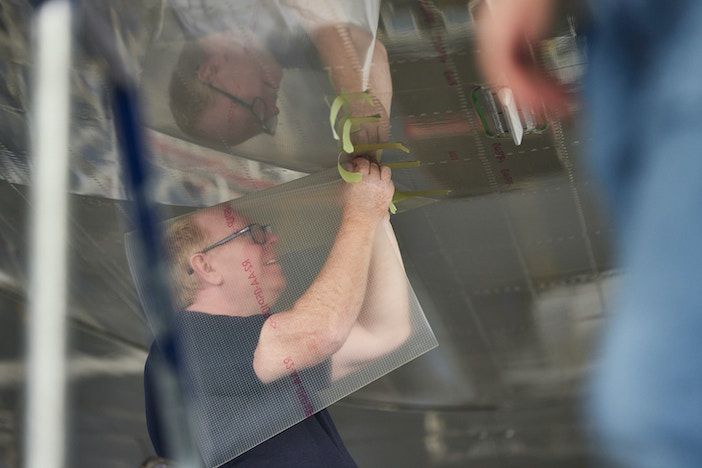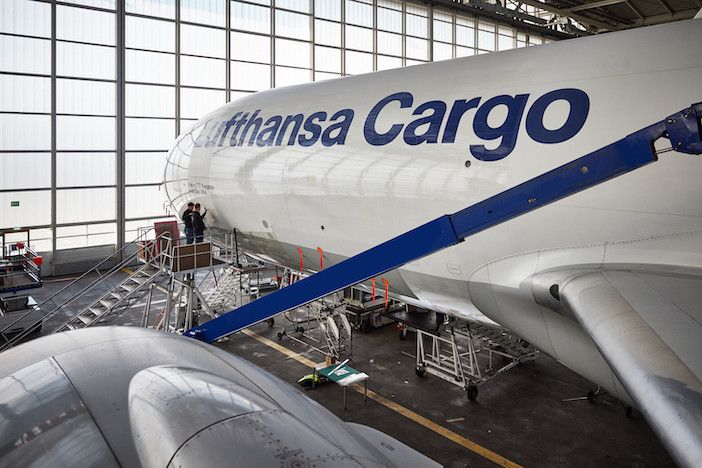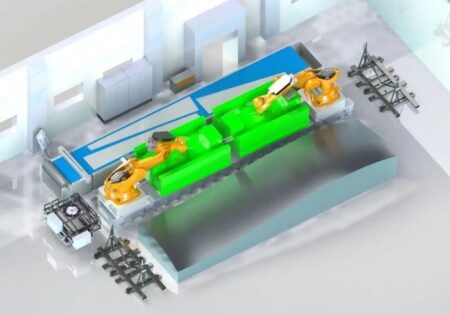The world’s first cargo aircraft modified with a surface film that mimics shark skin to improve its aerodynamics and fuel efficiency has entered service in Germany.
The Lufthansa Cargo Boeing 777F was flown from Frankfurt Airport for the first time last week covered in the Aeroshark material, which will enable a one percent fuel and emissions saving.
Airline SWISS has been transporting passengers since last October with the first Boeing 777-300ER covered with the skin.
Aeroshark has been jointly developed by Lufthansa Technik and materials and chemicals firm BASF.
The Aeroshark modification was carried out in mid-January as part of a scheduled maintenance layover for the freighter.
Aeroshark is a surface film that mimics the microscopic structure of shark skin. It consists of riblets around 50 micrometers in size that optimize airflow over the aircraft.
Lufthansa Cargo is applying the surface covering to its entire fleet of 11 Boeing 777s. The company estimates that the move will save more than 4,000 metric tons of kerosene and nearly 13,000 metric tons of CO2 emissions, equivalent to approximately 53 one-way/direct cargo flights from Frankfurt to Shanghai, will be saved every year.
Dorothea von Boxberg, chairwoman of the executive board and CEO of Lufthansa Cargo said, “We are proud to be able to operate our entire freighter fleet even more efficiently in the future thanks to sharkskin technology and to further reduce the carbon footprint of our modern fleet.
“Our investments for the introduction of AeroSHARK bring us closer to our goal of being 100% CO2 neutral in the air by 2050.”

SWISS is also having its twelve Boeing 777-300ERs modified with Aeroshark and has already covered three.
In December last year, Lufthansa Technik obtained a Supplemental Type Certificate (STC) from the European Aviation Safety Agency (EASA) for two types of Boeing 777, paving the way for the serial application of Aeroshark to the 777 fleets of the launch customers, which has now begun.
Aeroshark is being developed so it can cover different aircraft as well as cover more of an aircraft’s surface. According to Lufthansa and BASF, modeling shows that 3% of CO2 emissions could be removed if used at its maximum coverage.





